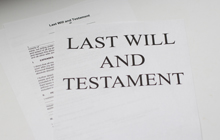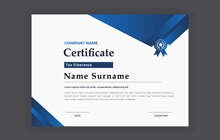Dale et al. v the Queen – Timing on issue of shares in Section 85 rollover

Tax lawyer and accountant David J. Rotfleisch on a successful appeal of a Tax Court decision
Factual Background of Dale et al. v. The Queen
Bernard and Peter Dale (the "Taxpayers") jointly owned a building. The Taxpayers also owned 23 of the 26 shares of Dale Corporation, a corporation incorporated under the laws of Prince Edward Island, with the remaining shares being owned by Bernard's other children and wife. In 1985, the Taxpayers decided to transfer ownership of the building to Dale Corporation. All shareholders consented to this. To avoid a large taxable gain on transferring ownership of the building, the Taxpayers decided to implement a section 85 rollover. To allow for the rollover, Dale Corporation would assume the existing mortgage debt on the building and issue to each Taxpayer a preference share. The sale was completed on December 30, 1985. The necessary section 85 election forms were filed by March 1986.
The day after the sale, Dale Corporation issued to each Taxpayer a tax-free capital dividend of $80,000 on their respective preference shares.
However, Dale Corporation lacked the authorized capital to issue the preference shares. On December 28, 1985, the shareholders agreed to increase the capital and make an application for supplementary letters patent as required by the Companies Act of Prince Edward Island. In 1988, it was discovered the supplementary letters patent were never issued. This error was attributed to the corporation having been under receivership during which time the receiver held the corporate records, as well as to the death of the corporate secretary.
To resolve this issue, in 1988 the shareholders ratified the necessary increase in share capital. The shareholders had also agreed that Dale Corporation would continue under the laws of Nova Scotia, which was approved by issuance of a certificate of continuance on July 27, 1989. On May 22, 1991, the shareholders confirmed the ratification of the share increase and directed Dale Corporation to make an application under Nova Scotia Companies Act to be permitted to late file a copy of the contract between the Taxpayers and Dale Corporation. This application was made as the Nova Scotia Companies Act required that when shares are sold for consideration other than cash, a copy of the contract affecting the sale of the shares be filed with the Corporate Registrar before shares are issued. The application resulted in orders from the Supreme Court of Nova Scotia for the following.
- The first order in 1991 allowed Dale Corporation to late file a copy of the contract between the Taxpayers and Dale Corporation for the sale of the building.
- The second order in 1992 declared Dale Corporation's authorized share capital to have been amended as needed to issue the preference shares effective December 28, 1985 and confirmed the preference shares were validly issued as of December 31, 1985.
The Canada Revenue Agency ("CRA") took the position the section 85 rollover was invalid because the shares were not properly issued in 1985 when the transfer of the property took place. The CRA assessed the transfer of the building as if the transfer had taken place at fair market value. The CRA also argued the dividends issued to the Taxpayers were a shareholder benefit and therefore taxable. The Canadian tax litigation lawyer for the Taxpayers appealed this determination arguing the opposite of the CRA's position.
The appeal initially went before the Tax Court of Canada.
Issue 1: Was the Section 85 Rollover Valid?
Section 85 of the Income Tax Act provides taxpayers with a tax-deferral and tax planning mechanism known as a section 85 rollover. The section 85 rollover allows the taxpayer, either an individual, corporation, trust or partnership, to transfer property to a corporation at an elected amount which falls within upper and lower limits prescribed by the Income Tax Act. Because this elected amount is usually at a cost which is less than the fair market value of the property, the taxpayer's taxable gain on the sale of the property to the corporation is normally deferred as a result of the rollover.
To have a valid section 85 rollover, there are five conditions which must be met.
- An eligible transferor which is an individual, trust, or corporate taxpayer, or a partnership if all of the partners are Canadian residents.
- An eligible transferee which is a taxable Canadian corporation.
- Eligible property as defined by the Income Tax Act. This includes buildings.
- The corporation, the transferee, must issue at least one share of itself to the transferor as part of the rollover. This is known as share consideration. The transferee may also provide additional non-share consideration, known as boot. The tax value of the share consideration plus boot must be equal to the elected amount discussed above otherwise there are adjustments resulting in tax.
- The transferor and transferee must file a joint election form T2057. This election is generally due by the end of earlier of the tax return filing deadlines for transferor or transferee.
For more information on section 85 rollovers, please read our article Section 85 Rollovers: A Canadian Tax Lawyer's Guide.
The CRA and the Taxpayers agreed the Taxpayers and Dale Corporation complied with the first three conditions for a section 85 rollover, as well as the fifth condition. Where the dispute lay was with condition 4. The CRA was arguing that because the shares were not properly issued at the time of the transfer of the property in December 1988, no share consideration was provided and condition 4 was not met.
The Taxpayers were successful on this issue. Justice Bowman of the Tax Court of Canada found all requirements of a section 85 rollover were met, and the section 85 rollover was valid. To support his judgement, Justice Bowman reminded the Minister of National Revenue, and by extent, that the CRA is not permitted to "pick and choose which legal relationships he will recognize and which he will not" absent specific statutory provision to the contrary. Justice Bowman held a corporation must act under the laws of the governmental body under which it is currently registered. This required Dale Corporation to correct the 1985 share issuance error under Nova Scotia corporate law, even though at the time of the transfer it was a corporation operating under the law of Prince Edward Island. Dale Corporation attempted to take the proper steps to affect the transfer of the property and issuance of the shares in 1985. When it discovered the error, it immediately took steps to remedy the error. These actions demonstrated an intent to issue the shares. The orders of the Supreme Court of Nova Scotia were therefore binding on the CRA.
Secondly, the CRA argued that section 85 required the shares used as share consideration be "issued simultaneously with the transfer of property to the company or indeed within the same taxation year". Justice Bowman found the CRA was incorrect. He states "there [must] be either an actual issuance of shares or a binding obligation to do so at the time of transfer and that the shares be issued within a period of time that, in all the circumstances, is reasonable." The shares do not need to be issued within the same year as the transfer of property. The agreement between the Taxpayers and Dale Corporation required the transfer of the shares. Dale Corporation and its shareholders acted pursuant to this contract by attempting to create the necessary conditions to issue the shares in 1985. When Dale Corporation discovered the error, which had occurred due to extenuating circumstances, it immediately worked to correct the error. Justice Bowman thus found even though the shares were not properly issued within the same tax year as the transfer, the section 85 rollover was properly affected.
Issue 2: Were the Dividends actually Shareholder Benefits?
Subsection 83(2) of the Income Tax Act allows a corporation to issue capital dividends, which are tax-free to the shareholders, so long as those capital dividends do not exceed the amount of corporation's capital dividend accounts and necessary elections are filed. For more on capital dividends, please check out our article Tax Free Capital Dividends - Elections And Penalties.
The CRA took the position that since the preference shares the dividends were related to were not properly issued when the dividends were declared and paid, there were no capital dividends. With no capital dividend, the entire amount paid to the Taxpayers had to be a shareholder benefit under subsection 15(1) of the Income Tax Act.
Justice Bowman found the CRA to be correct. He argued section 83(2) of the Income Tax Act required all conditions to issue capital dividends, including the valid issuance of shares, must be met at the time the capital dividend is declared. This differed from his finding that not all conditions under section 85 must be met at the time of the transfer of the property to find a section 85 rollover had been validly completed. Since the preference shares were not properly issued when the dividend was declared, no capital dividend could exist. If the amounts transferred were not capital dividends, they must instead be shareholder benefits.
Federal Court of Appeal Decision – Dale et al. v. The Queen
This case resulted in an appeal and cross-appeal made from the Tax Court of Canada to the Federal Court of Appeal. In 1997, the Federal Court of Appeal issued its decision. The decision confirmed the section 85 rollover was properly affected despite the delay in properly issuing the preference shares. The decision further concluded Justice Bowman was incorrect to have found the $80,000 dividends to be a shareholder benefit.
Justice Robertson found the order of the Nova Scotia Supreme Court to be binding on the CRA. In response to the CRA's position that the Nova Scotia Supreme Court could not retroactively create a situation which did not exist at the time, Justice Robertson found the legislature had granted the court the ability to make retroactive orders. The fact that Dale Corporation was not a Nova Scotia corporation at the time the property was transferred and the dividends were issued does not mean the Nova Scotia Supreme Court had no jurisdiction to make the orders. Per Justice Robertson, "the Companies Act of Nova Scotia authorizes its Supreme Court to decide "any question necessary or expedient to be decided for rectification of the register"[and] that however wrong or irregular an order of a court may be, that order still binds until reversed [or that there is a] self-evident and not a matter of further debate [jurisdictional error which allows for collateral attack]." There was not sufficient cause to believe the Nova Scotia Supreme Court lacked jurisdiction to make the retroactive decision in this case.
The order had rendered the preference shares validly issued and outstanding by the end of the 1985 taxation year. The conditions to issue capital dividends were thus met at the time the dividends were issued, as were the requirements for a section 85 rollover.
Important Take Aways from Dale et al. v. The Queen
Tax results are sometimes determined by laws outside of the Income Tax Act or the findings of the Tax Court. How and whether a legal transaction is recognized for tax purposes often turns on the terms of any agreements and whether the common law and legislative provisions of the jurisdiction in which the transaction is made find the transaction to be valid. If the legal transaction is valid and properly documented under the laws under which it was affected, the CRA is required to also find the legal transaction valid unless it has statutory authority to find otherwise.
Implementing a Section 85 rollover does not require the share consideration to be issued at the time the property is transferred, or even within the same tax year. The rollover does require that there be sufficient evidence of the obligation to issue the shares and that the shares be issued within a reasonable period of time given the circumstances.
Lastly, this case is a reminder that previous errors are not always fatal to a taxpayer's situation. Depending on the nature of the error, our experienced Canadian tax lawyers can implement strategies to correct outstanding errors.
This situation may have turned out well for Bernard and Paul Dale, but getting that positive result required years of litigation, expense and stress which could have been avoided if the shares had been properly issued in 1985 as intended.
David J Rotfleisch, CPA, JD is the founding tax lawyer of Taxpage.com and Rotfleisch & Samulovitch P.C., a Toronto-based boutique tax law corporate law firm and is a Certified Specialist in Taxation Law who has completed the CICA in-depth tax planning course. He appears regularly in print, radio and TV and blogs extensively.
With over 30 years of experience as both a lawyer and chartered professional accountant, he has helped start-up businesses, cryptocurrency traders, resident and non-resident business owners and corporations with their tax planning, with will and estate planning, voluntary disclosures and tax dispute resolution including tax audit representation and tax litigation. Visit www.Taxpage.com and email David at david@taxpage.com. Read the original version of this article on Taxpage.com.










(0) Comments